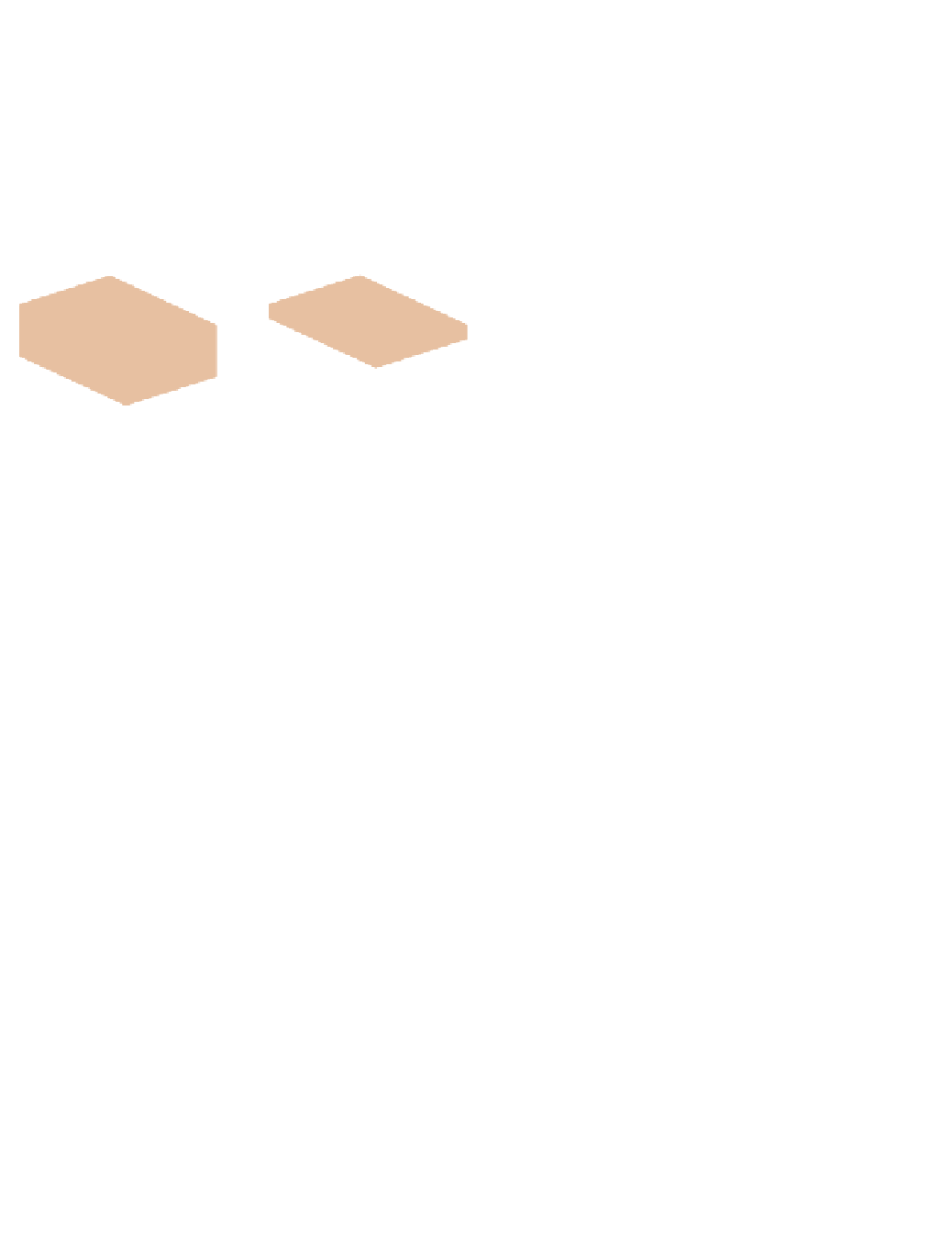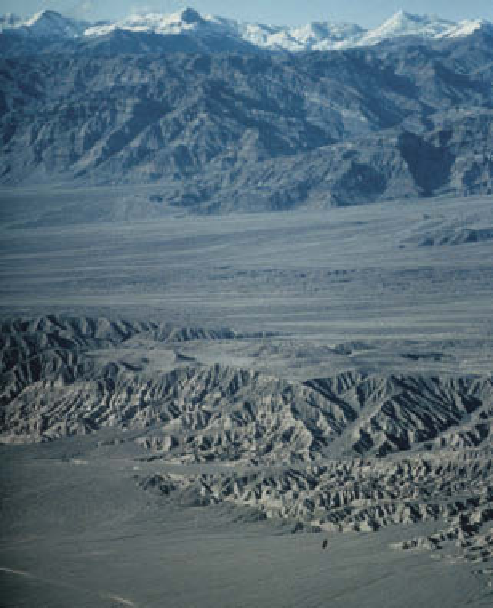Geoscience Reference
In-Depth Information
seasonal) breaks, or
unconformity
representing longer,
often erosional, gaps (
Figure 23.1
;
Plate 23.3
).
The terms
bed
and
facies
are sometimes used interchangeably but
not without confusion! Cross-bedded sediments in
meandering rivers and deltas (see
Figures 14.15
and
17.14
)
contain many individual beds, and even laminae, but their
collective sediment bundles are recognized generically as
floodplain or deltaic facies. Facies represent discrete events
or periods of accumulation and are therefore also basic
units of chronostratigraphy and succession or
sequence
.
Geology employs a hierarchy of progressively longer time
from
ages, epochs, periods
to
eras
and
aeons
for the age
of rock
supergroups
(whole assemblages forming geo-
logical
terranes
) and their progressively smaller compon-
ent
groups, formations
and
members
. The last of these is
usually composed of several beds which may also con-
stitute a facies (see also
Chapter 23).
Dynamic links between process, genetic facies and
time at the largest geological scales underpin
sequence
stratigraphy
, connecting tectonic, sea-level and climate
change in the history of entire sedimentary basins.
Onshore this is seen in the tectonic uplift and extension
of southern California, with vigorous erosion of elevated
fault blocks infilling down-faulted trenches with coarse
detritus (
Plate 23.4
).
Uplift was high enough to permit
Quaternary glaciation and extensive enough to isolate
inland areas from Pacific maritime climate. These influ-
enced sediment fluxes and styles, with the intro-
duction of glacigenic, desert evaporite and aeolian facies.
In addition, local transtension triggered minor volcanic
(a) Unconformity
(b) Nonconformity
(c) Disconformity
deposition of Devensian permafrost deposits on a wave-cut
rock platform eroded across tilted Carboniferous limestone,
Gwr coast, south Wales. The platform was cut by higher
Ipswichian interglacial sea levels, 125 ka ago; the limestone is
over 325 Ma old.
Photo: Ken Addison
Death Valley, California, with typical depths of 3-7 km of
mostly Quaternary sediment infill, sourced here from the
Amargosa range. The sharp boundary of light-coloured trench
sediments running across the foreground is part of the
Furnace Creek fault zone.
Photo: Dee Trent























































































































